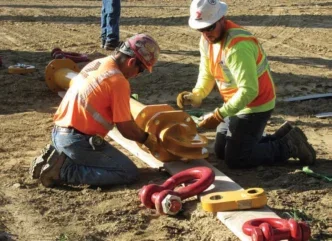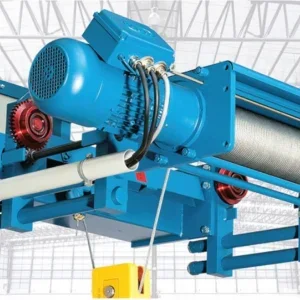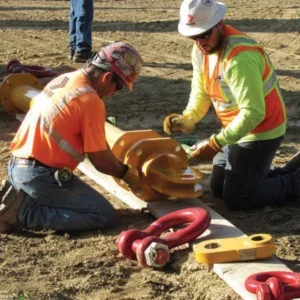
We rarely talk about lifting and spreader beams at the same time because, while they are both belowthe- hook products, they are very different.
As we know, lifting beams are typically designed for a bending moment versus the spreader beam that incorporates top rigging and is designed for a compressive load. The stability of a spreader beam is a result of taller headroom (due to top rigging) and a lower centre of gravity from the crane hook attachment to the point of the assembly (lifter and load); whereas the lifting beam connects directly to the crane. Spreader beams are often lighter weight versus a lifting beam, again, due to the design and top rigging.
It’s also true that, in general, more welding work is found on a lifting beam, and more rigging on a spreader beam, which must be considered at the point of inspection. However, when it comes to safe use and removal from service, we can apply the same guidance to both types of beams.
For example, at Caldwell, our Model 20 lifting beam and Model 30 fixed spreader beam both comply with American Society of Mechanical Engineers (ASME) B30.20 BTH-1 Design Category B, Service Class 2, which is for specific tasks withstanding forces based on the unit’s rated capacity. Equally, both will only support loads up to their rated capacity when loaded correctly. Importantly, the owner/user is responsible for understanding and acting in accordance with local, state, country, and other regulations.
These important dos and don’ts are applicable to both types of products too:
- Do inspect the lifter for damage or excess wear before each lift. Check for structural bending and cracks; excess wear at load points and pins; cracked or broken welds; deformed hardware; cotter pins in place; nuts tightened on the swivel hook; or nuts tightened on shackles. If inspection reveals any defects, follow removal from service steps;
- Do contact the manufacturer to replace worn or damaged tags and/or decals;
- Do not exceed rated capacity;
- Do not lift or support people;
- Do not lift over people;
- Do not lift higher than necessary;
- Do not leave suspended load unattended.
REMOVAL & REPLACEMENT
Inspection is a key consideration when thinking about removal from service or further investigation because it is during preuse checks that defects are first discovered. Local standards likely don’t discuss specifics about product replacement, but they will contain information about inspection. They will also define the life span of the lifter looking at number of lifts and fatigue life of the structure.
Equipped with this information and a manufacturer’s manual, end users can put together thorough pre-use inspection and removal from service protocols. Depending on the application where the lifting or spreader beam is used, and the adherence to best practice, the issues that arise during these checks will vary. Structural damage can be cause by overloading, misuse, impact, and environmental issues.
If a user is unsure about the extent of the damage, it is always a good idea to speak to the vendor of the product and the manufacturer; they will be able to advise on its severity and a course of action. Lifters can be sent back to manufacturers for detailed inspection and, if reparable, we can quote on bringing them back into certified condition.
Regardless, it is important that it is clear that these procedures are taking place. Tags or paint could be used, depending on the owners’ typical procedure. If a lifter is going to be scrapped, we would recommend destroying it so it can’t be used. Cutting off the bail is a good idea.
If a beam is removed from service, is it likely that a replacement will be needed. If it is a standard item being used in a straightforward application, sourcing a likefor- like model will make sense. However, if it is a special application requiring a custom lifter, we would want to understand how it will be used and what happened with the original lifter. Understanding the application and witnessing any damage will be signposts to the best replacement beam.
Remember, a beam is only as safe as the components and other below-the-hook equipment used. The entire lifting system from the crane to the load itself matters.






